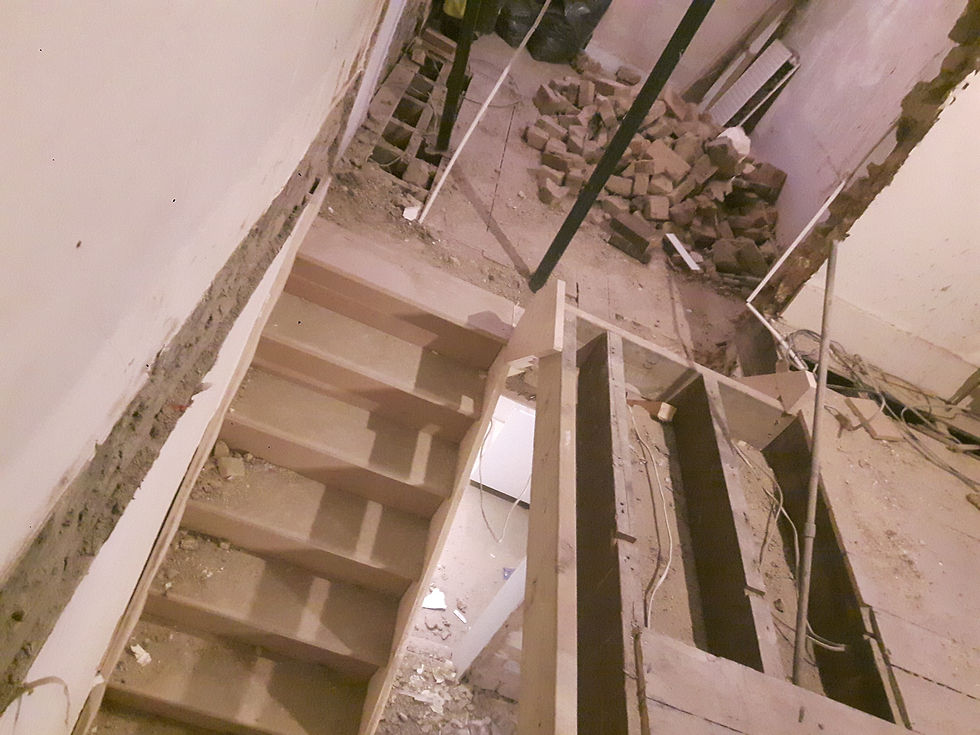Serving a Party Wall Notice: A Step-by-Step Guide
- Tom Norris

- Sep 7
- 4 min read
Updated: Sep 8
Everything You Need to Know to Stay Compliant Under the Party Wall Act 1996

Introduction
If you’re planning a loft conversion in Clapham, a rear extension in Surrey, or a basement excavation in Chelsea, one of the first legal steps is serving a Party Wall Notice.
A Party Wall Notice informs your neighbours of your planned building work and is required under the Party Wall etc. Act 1996. Many homeowners try to serve it themselves to save money, but mistakes can cause costly delays.
This guide will walk you through every step to serving a valid Party Wall Notice — and show you when it’s best to call in a professional surveyor to avoid legal issues.
What Is a Party Wall Notice?
A Party Wall Notice is a formal, legal document that gives your neighbours (adjoining owners) notice of proposed work that might affect a shared wall, boundary, or nearby structure.
It’s not just paperwork; it’s a legal safeguard that:
Gives your neighbours advance warning of your work.
Sets a clear legal timeline for responses.
Protects you from future disputes and injunctions.
When Do You Need to Serve a Party Wall Notice?
The Act applies in England and Wales, including London and the Home Counties. You must serve a notice if you plan to:
Build a wall astride or on the boundary line.
Work on a shared wall (cutting in for steel beams, raising a wall, removing chimneys).
Excavate within 3 metres of a neighbour’s property (or 6 metres for deep foundations).
Carry out work that could structurally affect an adjoining property.
Who Can Serve a Party Wall Notice?
Legally, you (the homeowner) can serve the notice yourself, but:
Many DIY notices are invalid because they miss key details.
A faulty notice restarts the 1- or 2-month clock, delaying your build.
A professional surveyor ensures notices are 100% compliant.
Step-by-Step: How to Serve a Party Wall Notice
1. Identify All Affected Neighbours
You must serve a notice on every adjoining owner:
Freeholders and leaseholders with leases over 12 months.
Owners of all properties that share a boundary or wall.Tip: Land Registry searches help you identify all parties.
2. Choose the Right Type of Notice
There are three main types:
Party Structure Notice: For work on an existing shared wall.
Notice of Adjacent Excavation: For digging within 3–6 metres of a neighbour’s property.
Line of Junction Notice: For building a new wall on or astride a boundary.
3. Draft the Notice Correctly
Your notice must include:
Your name and address.
Full details of the adjoining owner(s).
A clear description of the works (attach plans if possible).
Start date of works.
A statement of your intention under the Act.
The date and your signature.
4. Deliver the Notice Legally
Acceptable methods:
Hand delivery.
First-class post to their last known address.
Email (only if the neighbour has agreed in writing).
Notice Periods:
2 months for party wall or boundary works.
1 month for excavations.
5. Wait for a Response (14 Days)
Neighbours can:
Consent: Sign and return the notice; you may not need a formal award.
Dissent: They want formal protection, triggering a Party Wall Award.
Ignore: Silence after 14 days counts as dissent.
6. Appoint Surveyor(s) if Needed
If your neighbour dissents, a Party Wall Surveyor will draft a legally binding Party Wall Award.
You can use one Agreed Surveyor for both parties or each appoint separate surveyors.
7. Keep Records
Keep copies of all notices, proof of delivery, and any responses. This documentation protects you legally.
Common Mistakes to Avoid
Missing Owners: Forgetting a freeholder or leaseholder invalidates the process.
Vague Descriptions: Notices must detail exactly what work will be done.
Late Notices: The law requires at least 1–2 months’ notice before work begins.
DIY Errors: Incomplete or incorrect notices restart the clock and frustrate neighbours.
Example Scenario
A homeowner in Battersea wanted a rear extension. They served DIY notices but missed the freeholder of a neighbouring flat.
The process restarted, adding 2 months to their project timeline.
MET Surveyors stepped in, reissued valid notices, and secured a Party Wall Award.
The project moved forward without further issues.
Why Use a Professional to Serve Notices
While you can serve your own notices, surveyors:
Guarantee notices are valid and enforceable.
Speed up the process by avoiding mistakes.
Help maintain good neighbour relations with clear, professional communication.
Free Party Wall Notice Template
Want to try serving your own notices?
Download MET Surveyors’ free Party Wall Notice template.
Use it to prepare your notice correctly.
If your neighbour dissents, we’ll take over and handle the Party Wall Award.
FAQs
Q: What if my neighbour doesn’t respond? Their silence is treated as dissent, and a surveyor will be appointed on their behalf.
Q: How soon should I serve notices? At least 2 months before structural works or 1 month for excavation.
Q: Does serving a notice guarantee consent? No, but it’s a legal requirement and the first step to securing an Award if needed.
Why Choose MET Surveyors
Accuracy: Thousands of valid notices drafted and served.
Speed: We ensure your timeline isn’t delayed by DIY errors.
Expertise: London boroughs and Home Counties specialists.
Neighbour-Friendly: Our professional approach reassures adjoining owners.
Fixed Fees: Clear, upfront pricing.
Take the First Step
Whether you’re planning a loft conversion in Streatham, an extension in Surrey, or a basement in Chelsea, we’ll draft and serve legally compliant notices to get your project moving.
Speak with a Party Wall expert today. We proudly serve all London boroughs and the Home Counties







Comments